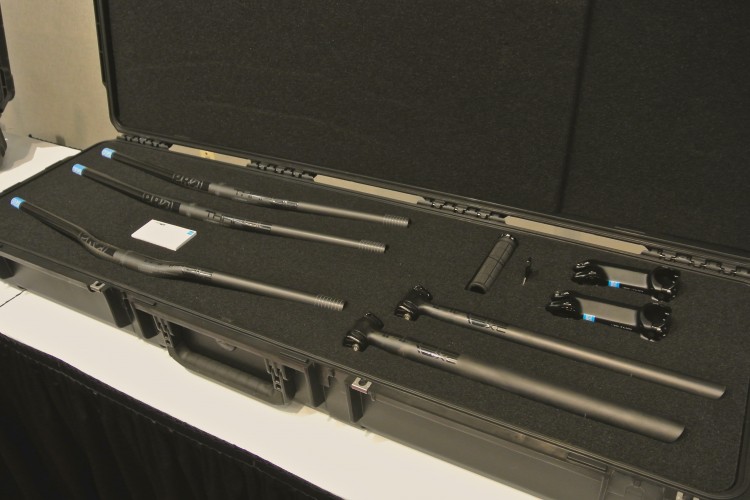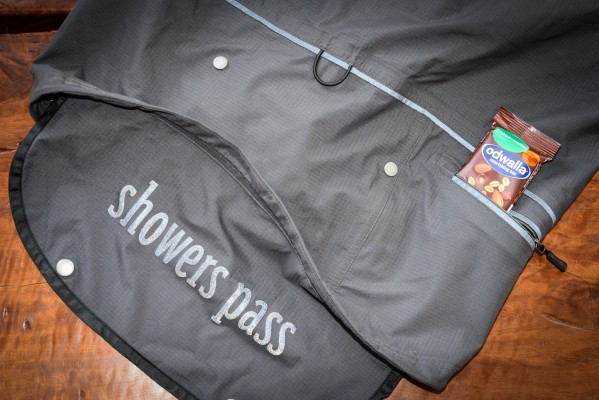
Even the best air sprung forks and shocks can’t quite match the suppleness of coil suspension. However, metal springs are always going to weigh more than air which means many riders took the penalty in plushness to shave some grams. But modern mountain bikes are lighter and more capable than ever, which has created a bit of a renaissance in coil suspension. If you’re saving weight on the frame, wheels, drivetrain, etc., you can “spend” some of those grams to improve your suspension. That’s the idea behind products like PUSH’s ACS-3 coil conversion kit, MRP’s new Ribbon coil fork, and now, Cane Creek’s Helm Coil.
Specs

Like it’s air-sprung sibling, the Helm Coil chassis starts with 35mm stanchions. Currently, it’s available only for 27.5″ wheels with travel between 130mm and 160mm. The travel is adjustable in 10mm increments by moving an internal coil piston. No additional parts are needed to adjust the travel. Of course, the Helm Coil has a tapered steerer and Boost (15×110) axle spacing. Cane Creek puts max tire clearance at 65mm (2.6″). The Helm Coil weighs in at a claimed 2,260g, just 190g heavier than the Helm Air.
Forks will ship with a 55-lb spring stock, which should cover riders between 160lb and 190lb; 45-lb and 65-lb springs will be offered for $65 each.
Both the Coil and Air share the same damper that offers adjustment for high speed compression, low speed compression, and low speed rebound. Spring preload is adjusted via a dial on top of the left leg.
Pricing is identical for both forks at $1,100. The Helm Coil is available for pre-order now, with the forks shipping in November.
Test Ride

While I was up in Whistler for Crankworx I rode the Helm Coil on singletrack trails in the Lost Lake area as well as in the bike park. Sam from Cane Creek helped me swap out the stock 160mm travel Fox 36 fork on my borrowed Rocky Mountain Altitude for the Helm Coil, and then we hit the trails. We began our ride with a mix of steep climbs; first on gravel and then on singletrack. When standing to grind up the gravel bits, the Helm was supportive, riding high in its travel.

On the techy singletrack climb, I felt the stock 55-lb spring was a bit too firm for me, even though I’m heavier than the range of riders for which it was intended. Even with the low speed compression wide open and zero preload on the spring, I couldn’t get the plush feel I was after. Some of this likely has to do with the geometry of the bike, as the Altitude was in the lowest/slackest setting in Rocky Mountain’s Ride-9 system, making the front end ride light in general.
The descent on Comfortably Numb is classic, jank-gnar, Whistler singletrack. It’s got roots, sharp rocks, small natural doubles, rock rolls, dusty bomb holes — a little bit of everything. Through it all the Helm Coil didn’t flinch. The fork was stout, composed, and smooth. I didn’t come close to using full travel, but the fork didn’t feel harsh either. I wish there’d been more time to try the Helm Coil with a 45-lb spring because I think it would be a better match for my weight and riding style.

In the Whistler Bike Park I was able to use more of the travel, but considering the hits in the park are much bigger than on Comfortably Numb, that’s not a surprise. That said, I still didn’t bottom out the fork. However, the Helm’s stiffness continued to impress me no matter if I was riding a jump line, pushing through berms, or dropping into a rock garden. After riding the Fox 36 on the same trails, I can tell you the Helm is at least on par with the Fox in terms of burliness.
I just received a Helm Air fork for my trail bike which I’ll be testing over the next few months. Cane Creek is working on a conversion kit to change the spring from air to coil, and I’m looking forward to trying the Helm Coil when there’s more time to tinker with the setup. If it’s anything like Cane Creek’s shocks, taking the time to really dial in the settings pays dividends out on the trail.




















0 Comments